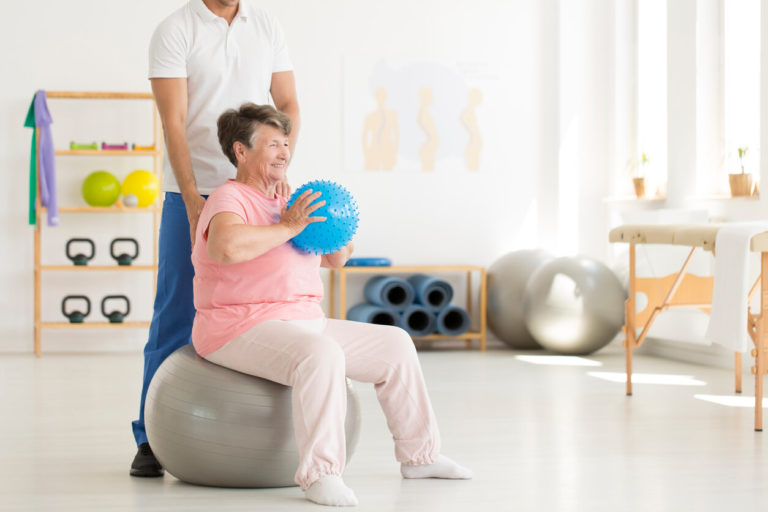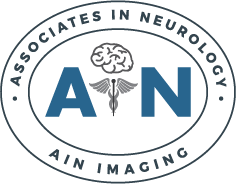
Parkinson’s disease is a progressive disorder that primarily affects movement and requires long-term treatment. It occurs when neurons in the brain producing dopamine — a chemical responsible for smooth and coordinated muscle function — are lost.
Common Parkinson’s disease symptoms include shaky hands or tremors, slow movement, rigid muscles, and balance issues. People often experience changes in their speech or writing as well.
Over time, symptoms get worse and often disrupt daily life. However, early intervention can slow the progression and maintain independence for longer.
Let us explore how physical therapy can help individuals with Parkinson’s disease.
Why Physical Therapy Matters in Parkinson’s Disease Treatment
Physical therapy is a key part of Parkinson’s disease treatment because it helps manage symptoms and enhances mobility. Therapists create personalized plans to improve muscle strength, coordination, and flexibility, making everyday activities easier.
It is important to note that physical therapy does not replace medication, such as carbidopa/levodopa (Sinemet). However, when combined with medications and other therapies, it helps optimize overall treatment plans.
Benefits of Physical Therapy for Parkinson’s Disease
Here are some significant benefits of including physical therapy in Parkinson’s care.
Improved Motor Skills
Parkinson’s patients often struggle with slow movements and stiffness. Physical therapy focuses on exercises that restore balance and movement speed.
Better Posture and Balance
Therapists teach techniques that correct postural habits and improve coordination, which reduces the risk of falls.
Enhanced Strength and Flexibility
Strengthening exercises target muscles weakened by bradykinesia and help patients stay physically active.
Reduced Freezing Episodes
Some individuals with Parkinson’s experience freezing episodes, where they suddenly feel unable to move. Physical therapy offers strategies to overcome these episodes.
Improved Quality of Life
Regular sessions can rebuild confidence, enabling people to maintain their independence and participate in daily activities.
How Physical Therapy Fits into an Overall Parkinson’s Disease Treatment Plan
A comprehensive Parkinson’s disease treatment plan often includes the following.
Medication
Medications such as dopamine agonists (Requip, Mirapex) or carbidopa/levodopa (Sinemet) are frequently prescribed to manage motor symptoms. These drugs help address dopamine deficiencies but also work best when combined with lifestyle adjustments.
Physical Therapy
Physical therapy is recommended to target motor challenges such as rigidity, slowness, and balance difficulties. A physical therapist will design exercises tailored to the individual’s specific symptoms and concerns.
Speech Therapy
Speech difficulties such as speaking softly or slurring words are common among Parkinson’s patients. Speech therapy can strengthen the muscles involved in speaking and swallowing.
Parkinson’s Disease Self-Care at Home
Gentle exercises, like tai chi or yoga, can enhance mobility while reducing stress levels. A well-balanced diet that includes vegetables, fruits, and lean protein also supports muscle function and energy levels.
Professional Support
It is crucial to regularly meet with neurologists or other specialized healthcare providers to monitor disease progression.
What to Expect During Physical Therapy for Parkinson’s Disease
During your first physical therapy session for Parkinson’s disease, the therapist will conduct an assessment to understand your symptoms, walking style, and overall mobility.
They will then design a plan that may include the following.
Stretching and Strengthening Exercises
These low-impact exercises are designed to improve flexibility, reduce muscle stiffness, and maintain joint mobility. Common examples include gentle yoga poses, hamstring stretches, and light resistance training to strengthen muscles and support overall movement.
Gait Training
Gait training focuses on walking techniques to address common challenges faced by Parkinson’s patients, such as shuffling or freezing episodes. These exercises help improve stride length, foot placement, and rhythmic movement, promoting smoother and safer walking.
Balance Exercises
Balance training aims to enhance stability, reduce the risk of falls, and improve overall coordination. Activities like standing on one foot, heel-to-toe walking, or using a balance board help patients feel more secure in daily movements.
Postural Awareness
Postural exercises address the tendency of Parkinson’s patients to develop a hunched or stooped posture over time. Techniques involve targeted stretches, core strengthening, and conscious posture correction to support spinal alignment and improve breathing and comfort.
PT sessions are highly individualized and adjusted as needed over time. With physical therapy, consistency is key to achieving long-term benefits. It may also help to combine these sessions with at-home exercises suggested by your therapist.
Parkinson’s Disease Treatment Near Me in Farmington Hills, MI
Treatment for Parkinson’s disease involves more than just medication. Physical therapy is a critical piece of the puzzle, helping to rebuild mobility and quality of life.
At Associates in Neurology, we provide integrated services, including physical therapy, to support Parkinson’s patients. Our neurology experts take pride in delivering patient-focused care that uses advanced technology and therapies.
If you would like to learn more about Parkinson’s disease treatment or want to schedule a consultation with one of our neurologists, call us today at (248) 478-5512 or use our appointment request form. We look forward to serving you!


